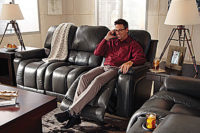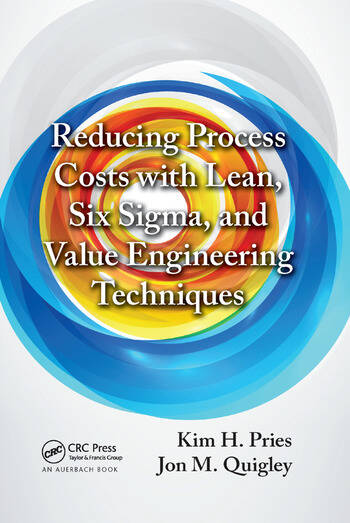La-Z-Boy stays agile with lean foundation
“We probably spend as much time on our people as we do on anything.”

“We probably spend as much time on our people as we do on anything.” —Darrell Edwards, La-Z-Boy Inc.

While many furniture makers have closed their U.S. factories and outsourced production, La-ZBoy has remained committed to domestic manufacturing. Photo courtesy La-Z-Boy Inc.

La-Z-Boy began by producing a chair with a simple reclining mechanism. Today, the company makes chairs equipped with rechargeable batteries and USB charging stations. Photo courtesy La-Z-Boy Inc.



In a few weeks, more than 100 million Americans will be tuning into Super Bowl LII. At press time, the two teams were not known, but one fact is certain: Many fans will be watching the big game from the comfort of a La-Z-Boy recliner.
La-Z-Boy Inc. has come a long way since 1927, when cousins Edward M. Knabusch and Edwin J. Shoemaker partnered to invest in a furniture business in the small town of Monroe, MI. The two men set out to design a chair for what they called “nature’s way of relaxing.” Using orange crates to mock-up and refine their idea, they invented a wood-slat porch chair with a reclining mechanism. The seat moved forward as the back reclined. Within a year, the cousins were producing an upholstered version of the chair for indoor use.
The invention quickly became a fixture of living rooms and dens across America. By 1961, the company was selling 1 million units annually.
Today, the company makes much more than recliners, including stationary sofas, sleepers and sectionals. It’s one of the largest furniture manufacturers in the country. In 2017, La-Z-Boy employed 8,950 people worldwide and tallied sales of more $1.52 billion.
While many of the company’s competitors have closed their U.S. factories and outsourced production, La-Z-Boy has remained committed to domestic manufacturing. Nearly all of its furniture is built in the United States from domestic and imported materials. The company’s five U.S. assembly plants are lean and efficient, bolstered by a global supply chain that is among the most capable in the furniture industry. The company’s flagship factory in Dayton, TN, earned ASSEMBLY magazine’s Assembly Plant of the Year Award in 2013, and it was named one of Industry Week magazine’s “Best Plants” in 2012.
The company takes pride in its ability to deliver custom furniture to the consumer consistently in four weeks or less. That’s no small achievement, considering that consumers can choose from approximately 175 furniture styles and almost 1,000 fabric and leather coverings.
La-Z-Boy’s factories are not just efficient and flexible. They’re also safe. In 2017, three of La-Z-Boy’s assembly plants—Dayton, TN; Neosho, MO; and Siloam Springs, AR—set records for safety. The Dayton plant exceeded 10 million hours without a lost-time accident, a record for the industry.
La-Z-Boy is also committed to minimizing its impact on the environment. The company’s headquarters—still in Monroe, MI—as well as most of its factories and regional distribution centers are “zero waste to landfill” facilities. In addition, the company’s factories meet environmental and sustainability guidelines set forth by the American Home Furnishings Alliance, an industry trade group.
The company is not one to rest on its laurels. In March, La-Z-Boy announced a $26 million investment in its Dayton assembly plant. The lion’s share of that investment will be for a new innovation center. Scheduled to open in the spring of 2018, the center will house a model shop, technology center, test lab and 3D printing lab. The center will provide La-Z-Boy’s engineers and design professionals with a collaborative work environment and the ability to work side by side with manufacturing engineers to test prototypes.
Recently, we spoke with Darrell Edwards, La-Z-Boy’s senior vice president and chief supply chain officer, to talk about the company’s manufacturing successes and its future challenges.
ASSEMBLY: You’ve said a good plant manager needs to be visible on the shop floor. Why?
Edwards: The shop floor is where the action is. Your best information is going to come from your teammates on the floor, performing the jobs. They’re the experts on their jobs. They can tell you all you need to know about how to help your leadership team be more successful.
I don’t just mean how to make things better. I’m also talking about the drumbeat of the plant, problems you might have with deliveries, problems you might have with incoming supplies or materials. There’s a host of information you get from your teammates on the floor.
Also, being visible builds credibility and trust, and those two things go hand in hand in getting better.
ASSEMBLY: You joined La-Z-Boy in March 2004 as general manager of the company’s assembly plant in Newton, MS. How have the company’s assembly lines changed since then?
Edwards: In 2004, we were far more traditional from a manufacturing perspective. We were a batch-and-queue manufacturer. Our assembly lines were centered on producing volume, as opposed to customization or personalization.
Today, we’re much more responsive. Our business practices are much more contemporary. We have developed a lot of lean expertise in our business, and I’m very proud of that. Our team has done a great job.
Additionally, we’re much more responsive to our customer base. We’re more agile. We’re able to respond to changing demands much faster. In essence, we run a custom business. You can go into a La-Z-Boy furniture gallery store, choose from an immense amount of options, and we will produce it rapidly, efficiently and at a high level of quality.
ASSEMBLY: So how do you manage mass customization?
Edwards: It’s our people. We have a very sophisticated supply chain, and we have a lot of sophisticated tools and processes, but we probably spend as much time on our people as we do on anything.
We have developed really smart people who have been trained in the latest ways to do business. Whether it’s lean manufacturing or business analytics, we have equipped our people with incredible skills. Had we not invested in our people, we would not be able to do our jobs as well as we do them today.
ASSEMBLY: Is there a particular assembly technology or methodology that has really made a difference on your operation during your time?
Edwards: I would go back to the lean methodologies that we put in place over a decade ago. For our business, at least, there haven’t been a lot of new manufacturing processes that represent a quantum leap. The difference for us has been that we have a really good lean foundation, and we have invested in training and in our people. So, our execution of the fundamentals is really good.
ASSEMBLY: La-Z-Boy began by producing a chair with a simple reclining mechanism. Today, the company makes chairs equipped with rechargeable batteries and USB charging stations. How has new furniture
technology influenced your assembly lines?
Edwards: Consumer demands are always changing, and we have always tried to be innovative and responsive to those demands.
If you build a foundation of fairly sophisticated lean processes in the beginning, then, when something new comes along from our R&D team, you can easily adapt on the assembly line. If the foundation is strong, you only need to tweak one component of a very large process that you’ve put in place.
ASSEMBLY: What does the future hold? What technologies might La-Z-Boy implement in the future?
Edwards: The big change I foresee in the next five to 10 years will be in the amount of knowledge needed to run an integrated supply chain like ours: from order entry, procurement, sales and operations planning to manufacturing, distribution and logistics. We will need to have business knowledge that’s spread easily across our entire supply base. To me, the winners in the future are going to be companies that are really good at doing that.
Consumer demands are not going to get any easier. Consumers are always going to want better quality products, delivered faster, and at a competitive price. The more intelligence you have from your supply base, the better able you will be to improve your speed, inventory position and obsolescence.
Looking for a reprint of this article?
From high-res PDFs to custom plaques, order your copy today!







